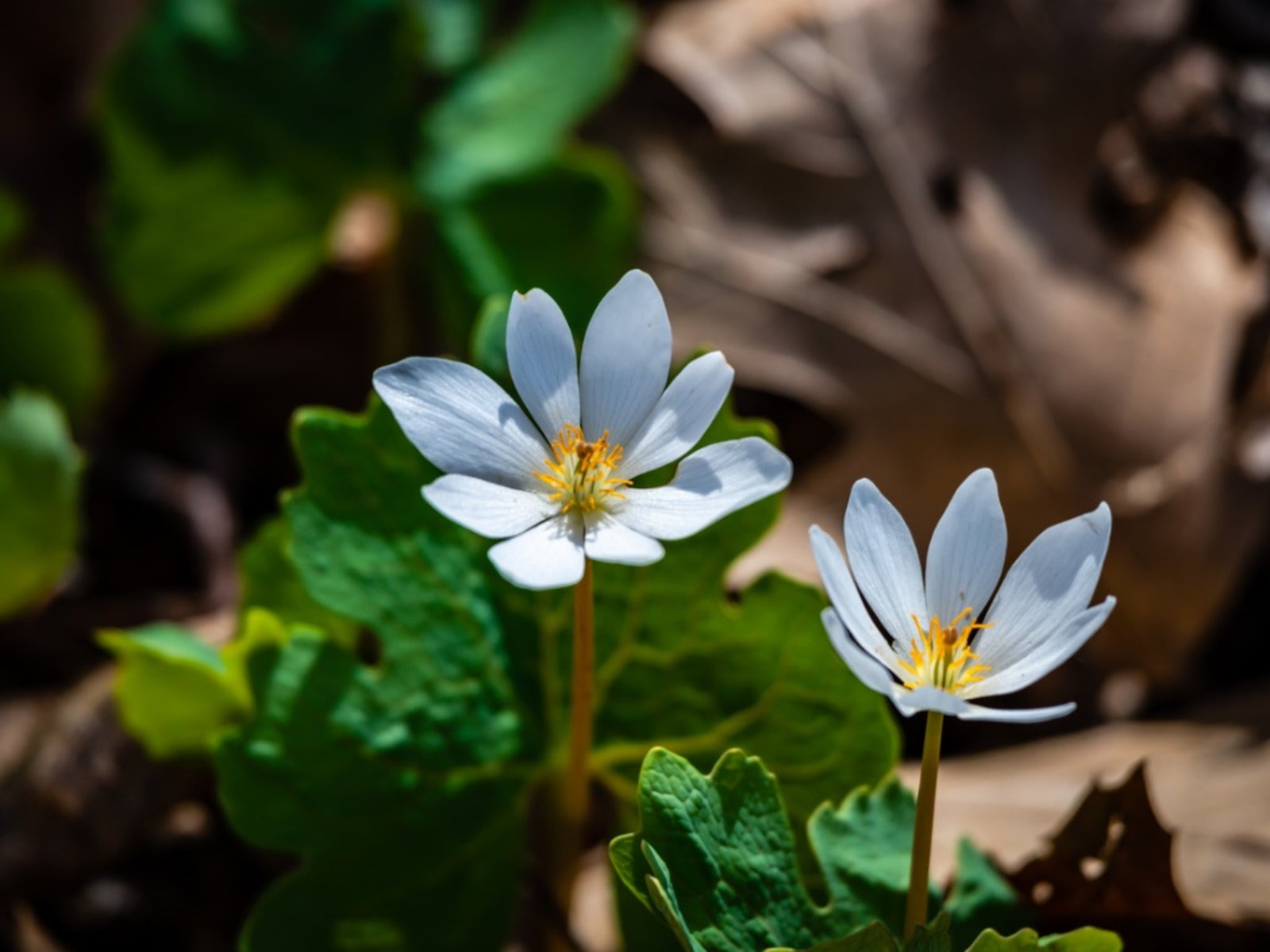Bloodroot Plant Care: Learn How To Grow Bloodroot (Sanguinaria Canadensis)


If you're lucky enough to have some on your property or know of someone else who does, you may want to consider growing a bloodroot plant in the garden. They make excellent additions to woodland or partially shaded gardens. Learning how to grow bloodroot is not complicated, and once established in the landscape, bloodroot plant care is simple.
Info and Facts About Bloodroot
Bloodroot plants are early spring bloomers and may be found growing wild in dappled sun in wooded areas, producing beautiful, solitary flowers. These white bloodroot flowers have 8 to 12 petals growing on leafless stems that rise above the foliage of this charming plant. Bloodroot plants, Sanguinaria canadensis, get their name from the dark red sap found in the stems and roots, which resembles blood. The colored juice from the stems of bloodroot plants can also be used to make red, pink, and orange dyes. You should wear gloves when working with bloodroot plants and practicing bloodroot plant care as leaves and other plant parts are skin irritants to some. Medicinal usage of bloodroot plants was widespread in centuries past; however, facts about bloodroot plant indicate all parts of the plant are poisonous. Therefore, it is best left to professionals to extract juices and powder from the roots for use in salves. Studies are currently underway using bloodroot as a treatment for cancers of the skin, though bloodroot products are expensive and facts about bloodroot plant indicate it is becoming hard to find and is reaching the point of extinction in some areas of the United States.
How to Grow Bloodroot
As one of the first flowers to appear in spring, bloodroot flowers are at home in the moist, organic soils of the woodlands. Replicate these conditions for successful growth of the plant in the home garden. Plant bloodroot flowers where they will be shaded by the leaves of deciduous trees after bloom is completed. Collect seeds from bloodroot plants and plant them while they are fresh. Bloodroot seeds mature in mid to late spring and you can place a paper bag over the mature seedpods, giving it a shake, in order to collect the seeds, which will germinate the following spring after planting. You can also propagate bloodroot flowers from root division at any time. Plant sections of the root ½ to 1 inch (1-2.5 cm.) deep in an acidic, organic-rich soil in a location with only dappled sun.
Bloodroot Plant Care
To keep the plant from entering dormancy, you should keep the soil moist. In fact, regular watering, twice a week, will allow the leaves to remain throughout much of summer. This can be reduced in fall and winter so it can go dormant. You can begin feeding your plants with a balanced fertilizer once they have reached their second year of growth. When this plant is happy in its location, it will colonize and provide many years of flowering.
Gardening tips, videos, info and more delivered right to your inbox!
Sign up for the Gardening Know How newsletter today and receive a free copy of our e-book "How to Grow Delicious Tomatoes".

Becca Badgett was a regular contributor to Gardening Know How for ten years. Co-author of the book How to Grow an EMERGENCY Garden, Becca specializes in succulent and cactus gardening.
-
 Looking For Plants To Give You The Soft And Fuzzies? Try These 5 Fuzzy Leaf Plant Options
Looking For Plants To Give You The Soft And Fuzzies? Try These 5 Fuzzy Leaf Plant OptionsLovers of texture, drama, silver foliage and tactile plants will adore these special sensory garden additions. These fuzzy leaf plant options will leave you all aglow
By Susan Albert
-
 Get Ready For A Summer Of Hummers! Grow These Full Sun Hummingbird Plants and Flowers
Get Ready For A Summer Of Hummers! Grow These Full Sun Hummingbird Plants and FlowersIf you’re lucky enough to enjoy a sunny backyard, make sure you are maxing out on your pollinator opportunities and grow these full sun hummingbird plants and flowers
By Tonya Barnett